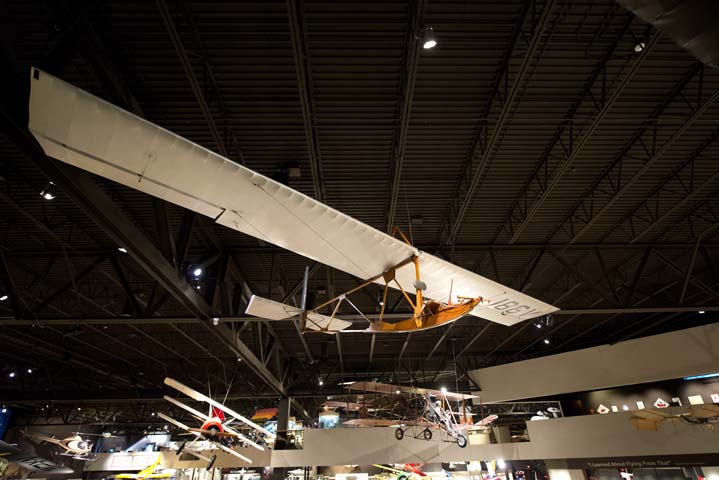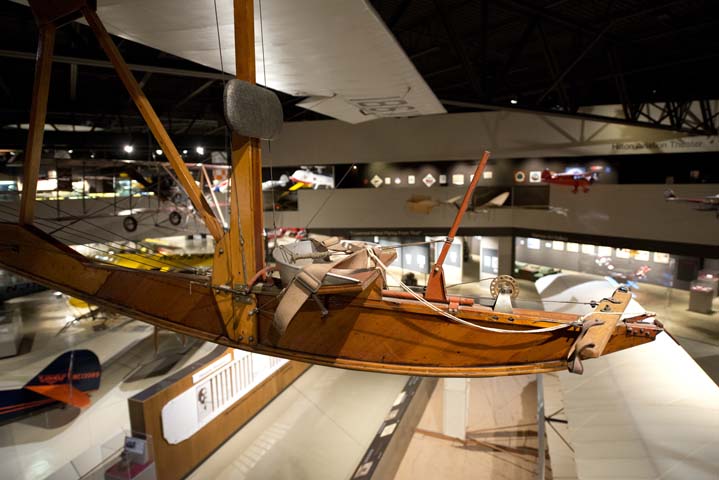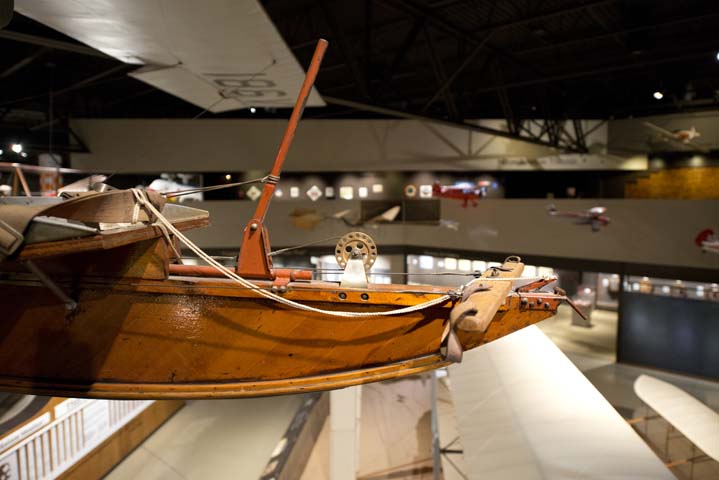1930 Cessna CG-2 Glider
Location: Pioneers of Flight
The CG-2, inspired by some of the German primary gliders of the day, was introduced in 1930, with an ad campaign that promised that “man might fly first, without power, in safety.” The price was $398 (about $5,700 in 2015 dollars) for the aircraft and a bungee-based launch system, crated and ready for shipment. Also included was an assembly manual; one of the reasons the CG-2 was so cheap was that it was a true do-it-yourself project and was shipped as a kit. Once built, it could be launched using the bungee cord method, or be towed by car or airplane.
Some accounts state that Cessna produced at least 300 CG-2s, but that’s not confirmed. However many they produced, they didn’t sell enough to keep the company from closing its doors for two years, starting in 1932. There are two known CG-2s on display in museums: ours and one at the Museum of Flight in Seattle, Washington.
The Cessna CG-2 glider was donated to the EAA AirVenture Museum by Leland Hanselman and C. VanAirsdale.
|
Aircraft Make & Model: |
Cessna CG-2
|
|
Length: |
18 ft. |
|
Wingspan: |
35 ft. |
|
Height: |
6 ft. 10 in. |
|
Empty Weight: |
120 lbs. |
|
Seats: |
1 |
| Flying Speed: |
20-25 mph |
| Landing Speed: |
15 mph |




